Everything you need to Know Before Building a Front Walkway
By Axis Fuksman-Kumpa • October 23, 2020

As the first thing people see when visiting your house, the importance of front walkways cannot be understated. Not only can front walkway landscaping add character and style to your house, but it can also positively impact your home’s curb appeal. Not to mention they make it easier for both residents and guests to make their way inside without getting stuck in mud or tripping over anything, as there is a clear path right to your front door. Walkways in the backyard are equally important and help dictate the path you want people to take from A to B.
But you're probably here because you already know all that, and as you consider taking on this project you're realizing there is a lot to consider! Does it need to match the colors of your front entry, be a certain length, or be made of certain materials? What width will be most functional? There are a lot of questions to answer, but there’s no need to stress because we are here to help you get answers to some commonly asked questions so you can build your new walkway with confidence.
What is the cheapest way to make a walkway?
There are a lot of different materials and each offer their own stylistic flair to your front entrance, but what about their impact on your wallet? Knowing your budget is the first place to start as it will impact every other decision you make.
Pricing can fluctuate and differ based on supply and demand and the region you live in but as use this breakdown as a general starting guide:
- Brick: $14-$18 per square foot
- Pavers: $14-$26 per square foot
- Gravel: $8-$15 per square foot
- Mulch: $5-$10 per square foot
- Cedar Chip: $5-$10 per square foot
- Concrete: $10-$20 per square foot
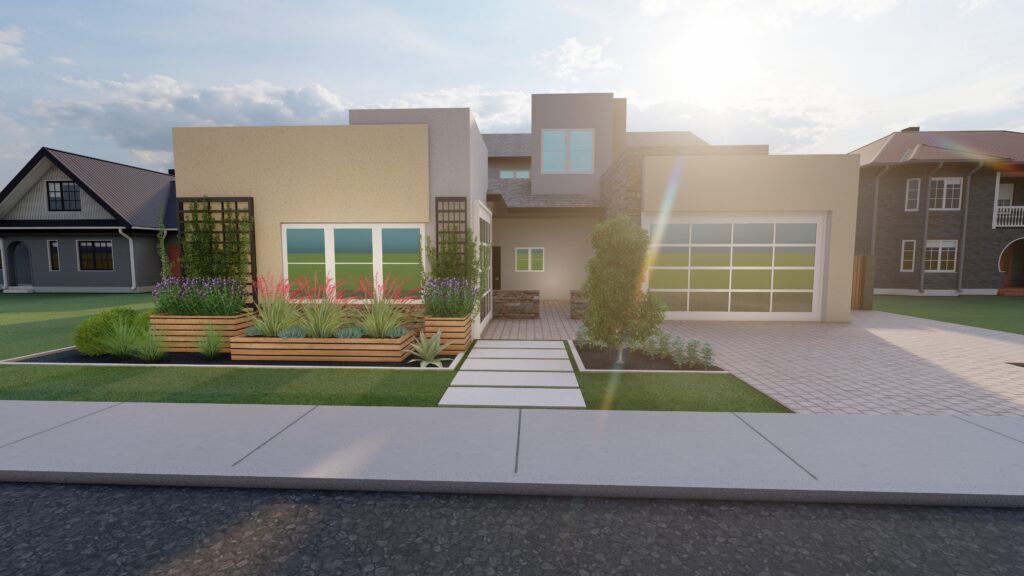
What can I use for an outside walkway?
Now, that you know what might be within your budget, here are some other considerations for each material type:
Brick
Known as one of the most classic options, the brick walkway is both timeless and beautiful. Common brick pathway patterns include: running bond, basketweave, herringbone, and stacked bond, each of which can be used for your walkway to give it a unique style. Beware that due to its somewhat porous nature brick can get slippery over time and may require power washing.
If you’re looking for a way to add materials with history to your walkway, reclaimed brick is a great option. This can also be a great way to make your project more eco-friendly by reducing the need for brand-new materials.
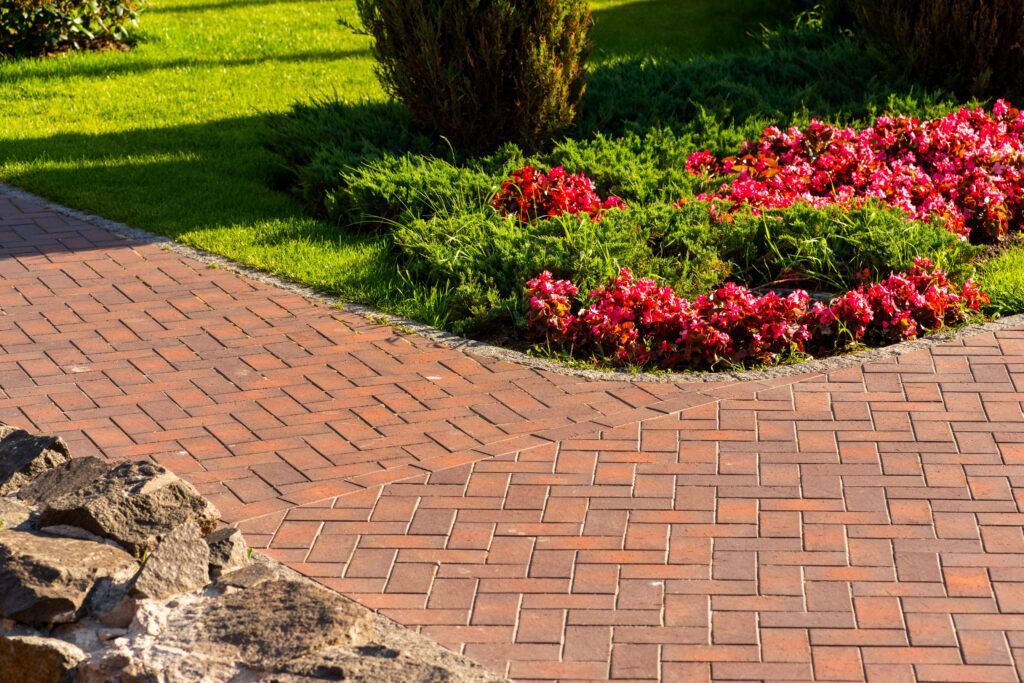
Pavers
Pavers can be found in a variety of shapes, colors, and sizes to match your walkway to the aesthetic and vibe of your home. Because they are dyed, they can come in a wide range of colors, all while maintaining the structural integrity of any other concrete material.
A paver walkway is most commonly dry-laid on a sand or cement mix base with flexible joints. When you’re dry-laying the pavers, make sure to use a type of polymeric sand on the joints to deter weed growth. This will help keep the maintenance low on your paver walkway and beautiful through every season. If you're working by yourself, you might want to avoid larger concrete pavers as they can be very heavy and hard to work with unless you have another helping hand.
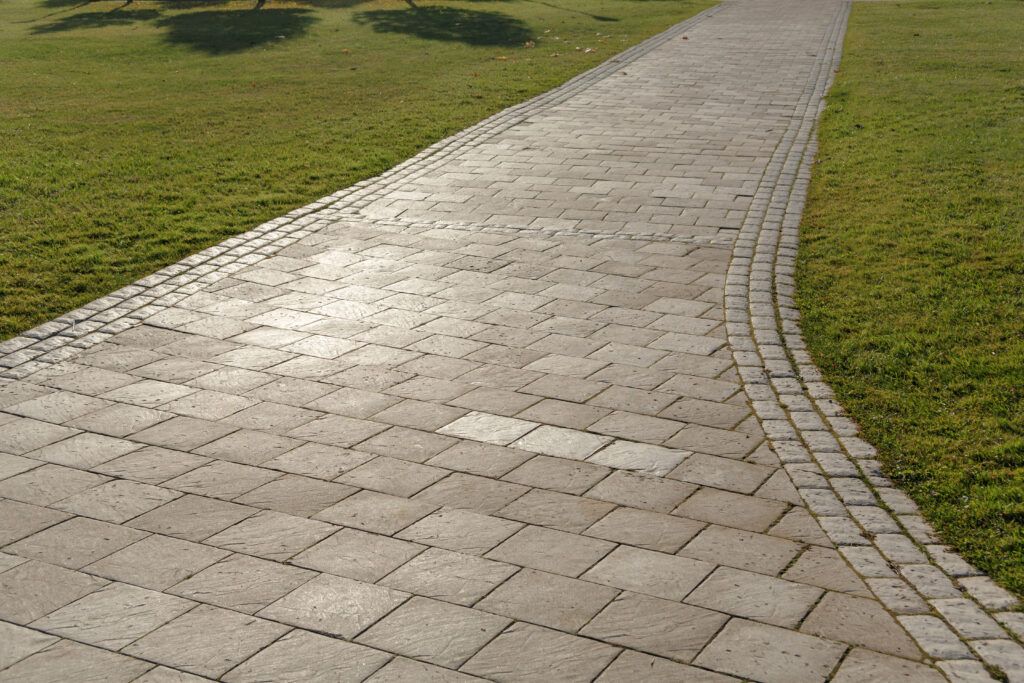
Gravel
Gravel is a popular pick for building walkways due to its low cost and nice appearance. While gravel looks just fine on its own, if you want to add more style to your gravel walkway, you can place down stepping stones in whatever shape or material you would like. This won’t add much expense but can allow you to add some personality to your walkway, especially if you make custom stepping stones.
One important thing to note is that gravel will need to have an edge restraint of some kind, whether it’s made of steel, cobblestone, or a different material. This prevents the gravel from spreading to the surrounding landscape, which would reduce the effectiveness of your walkway and could harm any surrounding small plants.
Similarly to paving stones, gravel will need a weed deterrent included to prevent plant growth and provide some stability to the front walkway. One recommended weed deterrent is a geotextile weed barrier, but there are many options to choose from.
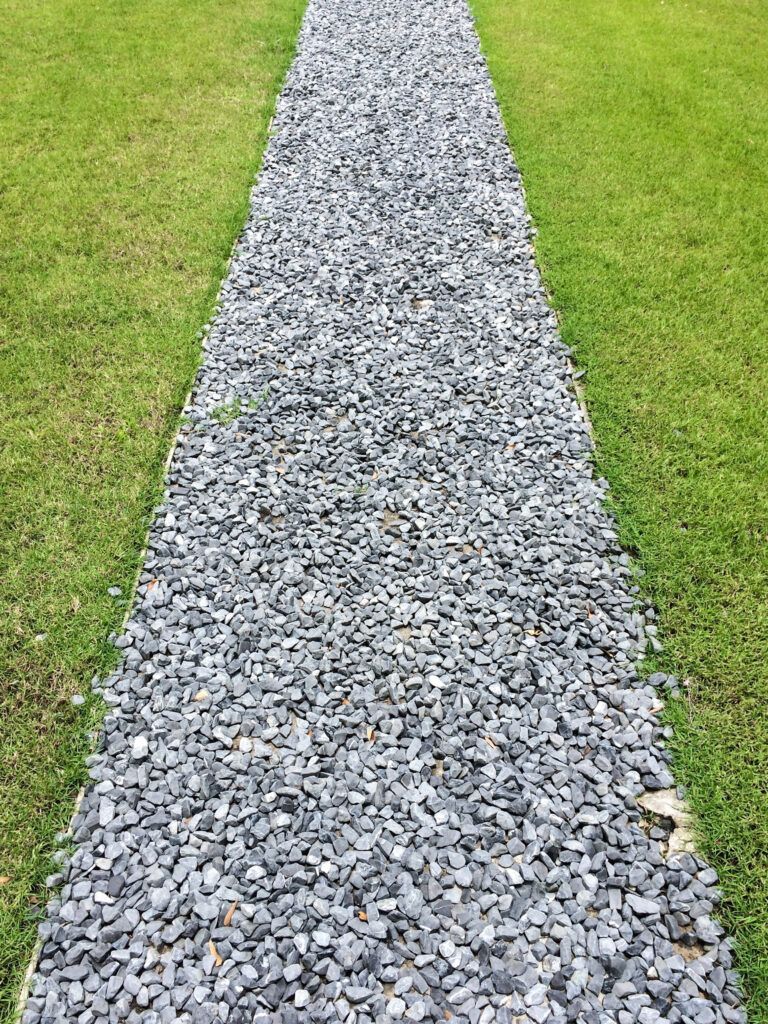
Mulch and Cedar Chips
Mulch is a popular pick for walkways due to its low cost and its natural-looking appearance for walkways that lead through a woodsy or garden area. Mulch is also a great DIY option for designers and homeowners due to its relatively light weight and ease of use.
Unlike gravel, mulch isn’t necessarily required to have edging material. However, a pathway made out of mulch may need to be refreshed every few years or so, which is something to keep in mind when thinking about the upkeep of your walkway.
Cedar chips, a common type of wood chip that is used for walkways, are also a viable option to use. Not only is it as affordable as mulch, but it typically has a lighter tint than mulch which may match your house and landscaping better.
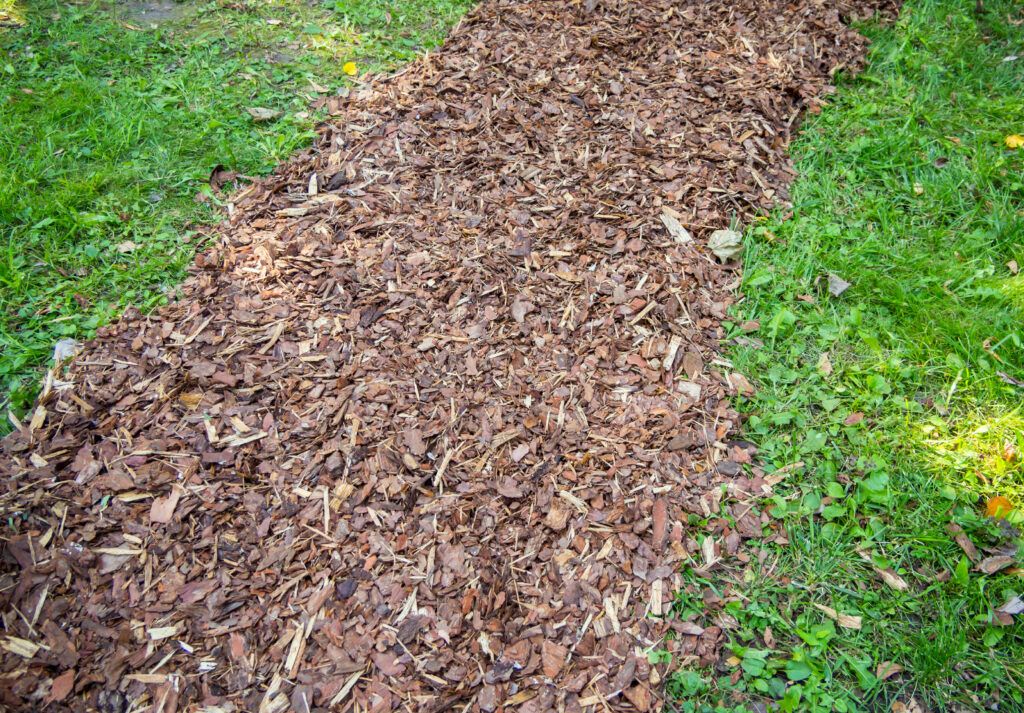
Concrete
Concrete is very versatile and a great material to use for a front walkway. If you want a classic and simple look, you can use the traditional sidewalk for a non-slip pathway. If you want to have a poured concrete walkway that looks like natural stone, you can get your sidewalk stamped and dyed to look like natural stone. Whatever vision you have in your head, there are plenty of additives or stains available to get the perfect color you’re looking for with concrete.
If you want concrete that has a different texture that’s visually noticeable, you can also get concrete aggregates. These aggregates are composed of geological materials such as gravel, sand, and crushed rock and come in a variety of different shapes and sizes. The size of the particles determines whether it is a coarse aggregate (for example, gravel) or a fine aggregate (for example, sand). Concrete aggregates also come in different colors if you want to add something that will create even more of a visual impact!
With concrete, the possibilities are basically endless for your front walkway, making it an extremely popular choice.
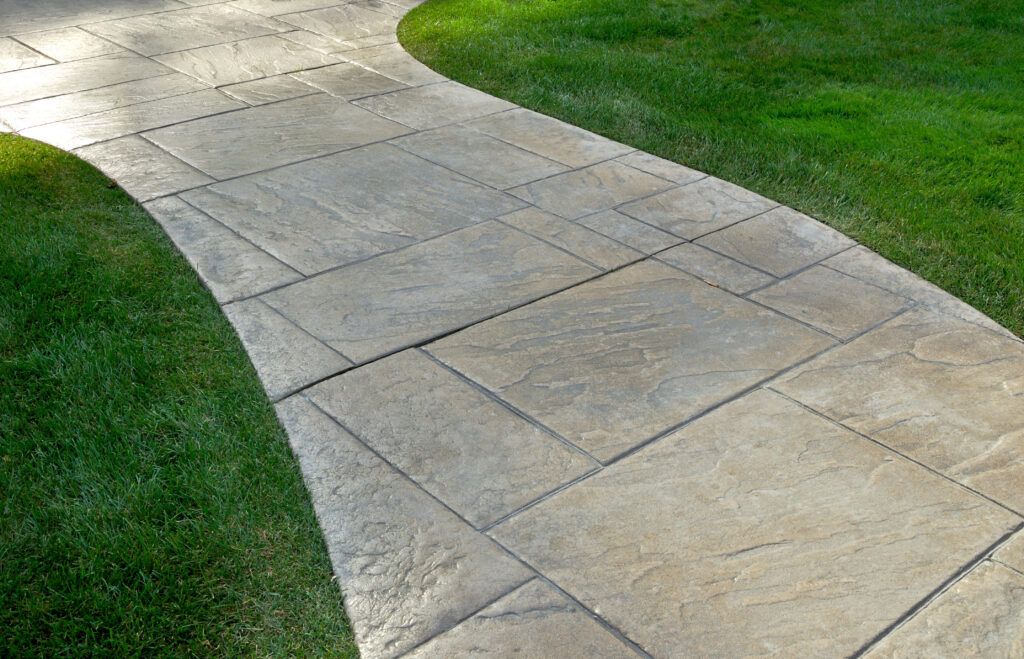
Border Materials
If you’re interested in border materials for your walkway, there are a lot of options that can be paired with the main material of your walkway for a path that’s protected, stylish, and truly all your own.
Some examples of border materials are:
- Metal
- Brick
- Wood
- Stone
These border materials can be used to create a border around the main material used for the walkway. This can help keep the main material in, keep grass out, or simply provide an additional stylistic option. Aside from the aforementioned, you'll also want to consider flower beds and plants which can also help to create a natural flow and pathway. Landscape lighting is also another simple way to strengthen the look and feel of your front walkway, not to mention make it easier to see at night.
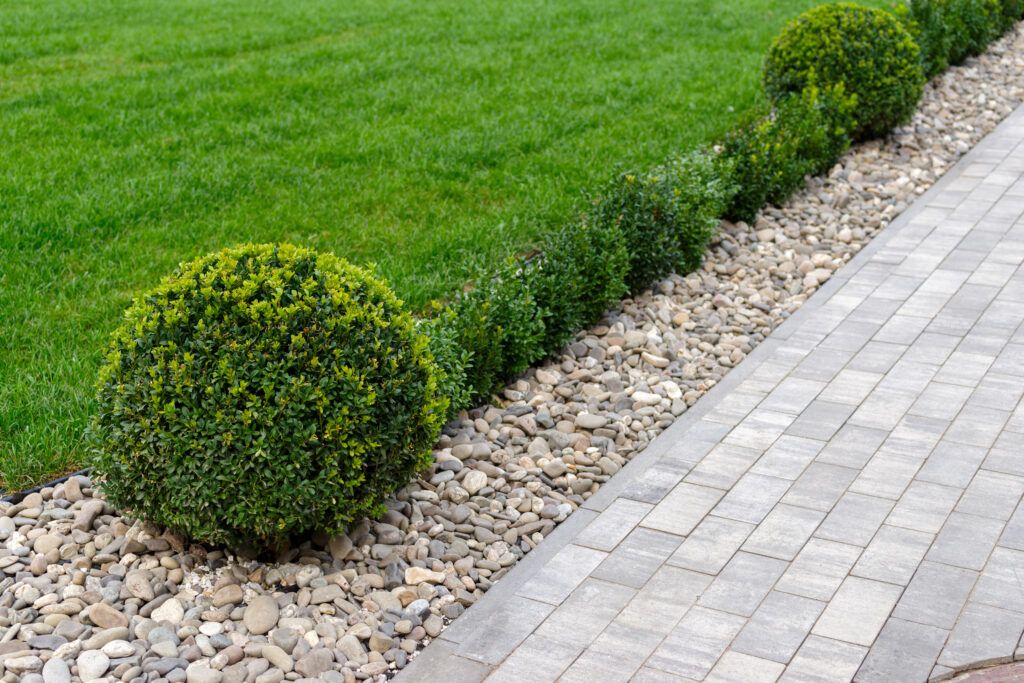
How do you make a simple walkway?
If you want to build an awesome walkway, you don't need to be a master craftsman—simple is often the name of the game. Here are the steps you’ll need to take to build a simple front walkway.
1. Plan out the shape and length of your walkway
By planning out the shape and length of your walkway, you’ll have a solid idea of what your final product will look like.
Sketch out the general shape and length of your walkway and before you start laying down materials, use rope or tape to get a visual of what the walkway will look like and how much material you'll need between your starting point and the front porch.
2. Build a base
Depending on the type of material you use, you’ll either need to use a dry-laid base on a sand or cement mix base with flexible joints or a wet-laid base on a concrete base with cement joints. For example, if you're considering constructing a flagstone walkway, you'll likely want to use a soil base, stone dust or sand.
Knowing which type of base you’ll need is important to make sure that everything is laid out correctly.
3. Lay down your materials
Similarly to the step above, the way you lay down the materials for your walkway may depend on what type it is. For example, concrete will need to be poured while mulch, cedar chips, and gravel are poured and placed. Even though the processes sound similar, the way to lay them down will look very different in practice.
If you’re unsure of how to lay down your specific materials for the best results, it may be a good idea to look up videos of those materials being used so you can see the process before trying to replicate it.
4. Continue building the next sections
After you’ve laid down the first set of materials, keep laying down materials to build the next sections of your pathway.
It may seem like slow progress at first, but you’ll reach the front porch before you know it!
5. Secure the edges with border materials
If you’re using a material like gravel that requires border materials, you’ll want to lay out your border after your materials have been laid out. That way, you can make sure the border materials are in exactly the right place.
6. Add in your final materials
Adding in your final materials, like polymeric sand for pavers, is the last step. After your final materials are laid down, your walkway is finished!
Test out your walkway by doing a celebratory walk or dance down it. You deserve it for all of that hard work!

What is the best material for a walkway?
The best material for a walkway depends on multiple factors. As homeowners, the main factors to consider are: cost, climate, safety, simplicity, and appearance.
Cost
As we discussed earlier, the cost can vary widely between different materials for walkways. If you’re looking to get a bang for your buck with a cheaper option, mulch, cedar chips, and gravel would be the way to go for walkway materials. If you want a more natural-looking walkway, any of those options would fit in perfectly and be relatively affordable.
Concrete, on the other hand, is a mid-priced material, while brick and pavers are on the more expensive side.
Depending on your budget, any material listed could make a beautiful difference to your walkway – as long as you know your budget and goals for your walkway and how to accommodate both, you’ll be in good shape.
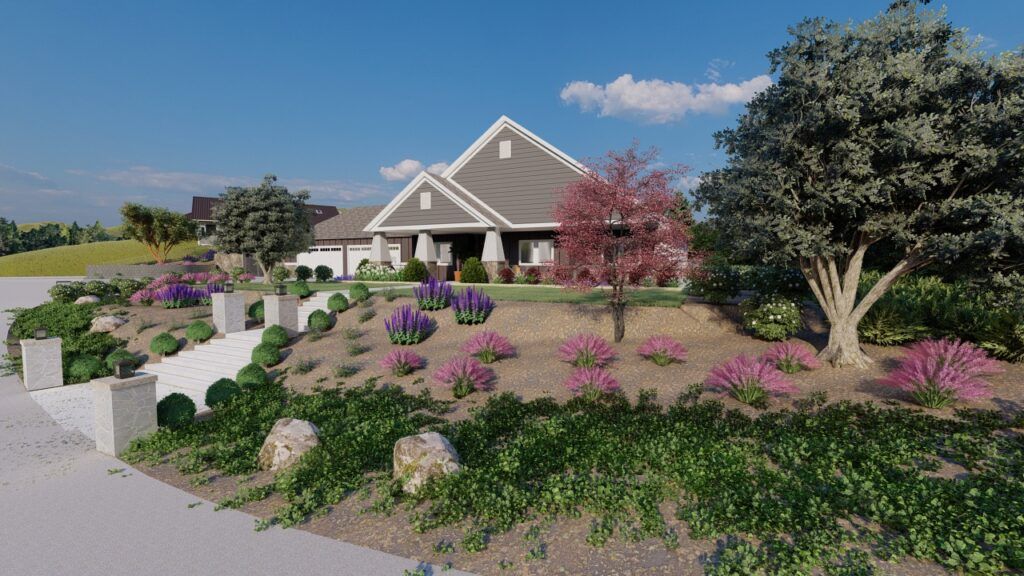
Climate
Different materials may react to certain weather conditions, so it’s important to know how your preferred material should be used where you live. Bluestone for example, tends to be a popular choice in large part due to its durability.
If you live in an area that is particularly hot or cold, for example, be sure to pour your concrete with intentional expansion joints. This way, there’s a way for the concrete to safely expand and contract when there are changes in temperature.
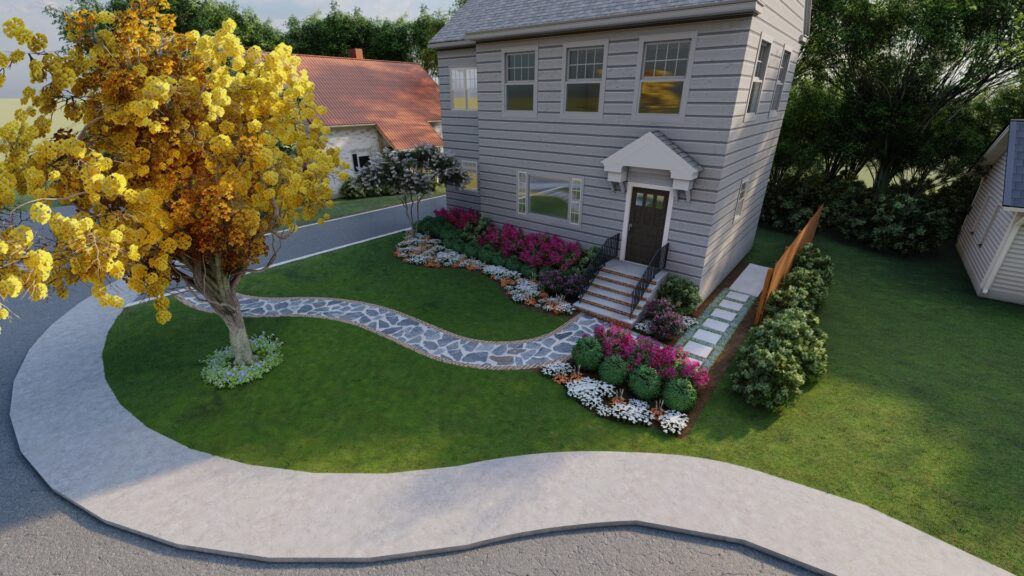
Safety
While brick is a popular choice for a walkway material, it can also become slippery when it’s wet over time due to its possibility of becoming porous over time. Being aware of that is important, especially if you live in an area that has particularly wet weather or damp times of the year.
If you can’t lift heavy objects, concrete or brick (especially brick pavers) would most likely not be the best option for you to use for a DIY front walkway. Both materials are on the higher end of the price spectrum due to their popularity and durability, but the weight of either material could be too much for someone who struggles with lifting heavy objects.
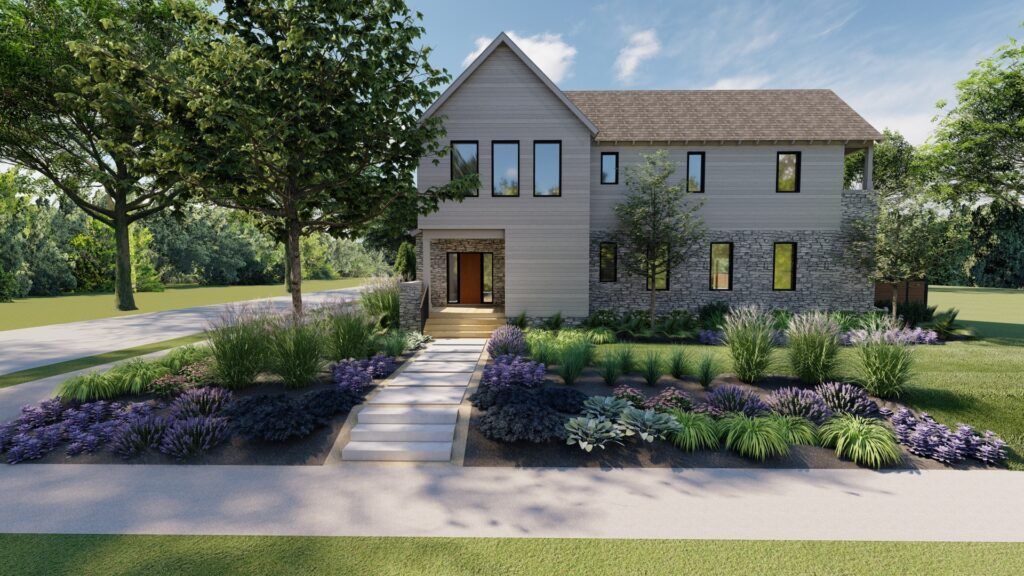
Simplicity
Certain materials are more simple to use than others. For example, gravel and mulch are easier to lay out for a DIY project than bricks or concrete. However, mulch will need to be replaced every few years – so if you’re not interested in the upkeep, concrete or bricks may be a better choice for you due to their staying power.
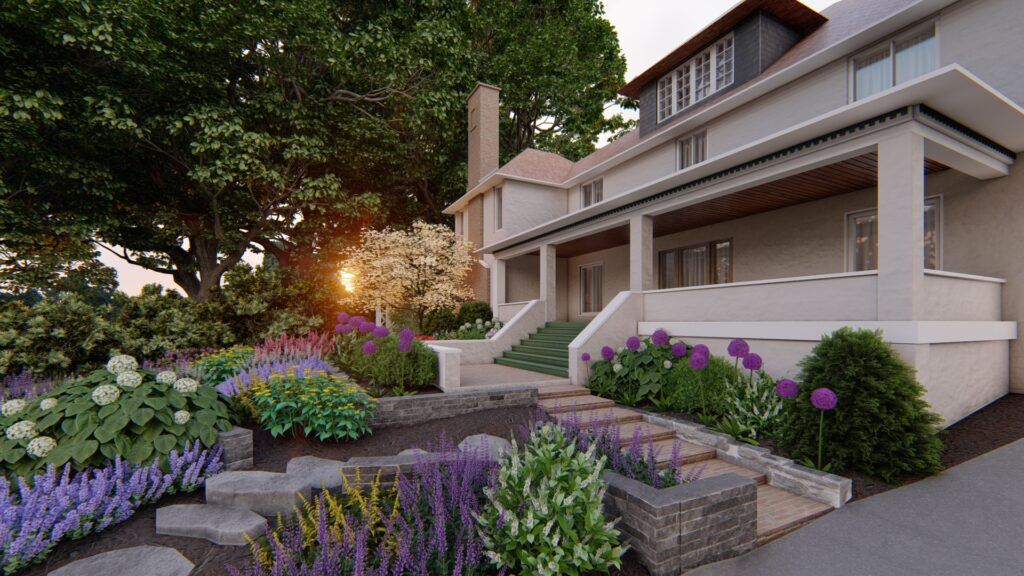
Appearance
Each type of material has its own style of appearance. For example:
- Concrete and pavers have a more modern and simplistic appearance.
- Mulch and cedar chips have a natural-like appearance that blends in nicely with the rest of your landscape.
- Brick has a timeless and classic appearance.
- Gravel has a simplistic and customizable appearance.
Depending on what aesthetic or look you’re interested in for your front walkway, you may have a variety of options available. It never hurts to scroll through Pinterest or Instagram in search of front walkway ideas. While one type of stone or brick might look good at the hardware store, seeing it in context can add a whole new dimension.
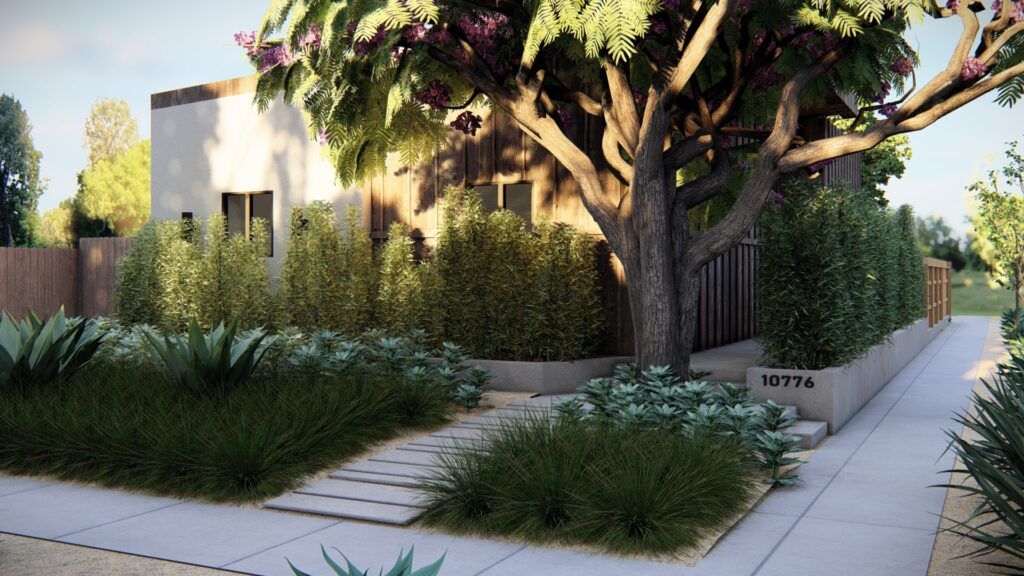
Conclusion
Now that you have everything you need to know about building a front yard walkway, you’re ready to build your own!
Want to keep brainstorming landscaping ideas for your outdoor living space? Tilly is here to help. Check out our website for our design packages, DIY backyard ideas, pricing, and more. When you’re ready to take the next step, contact us for all of your online landscaping needs!
Read more about: Landscape Design Tips, Gardening Tips